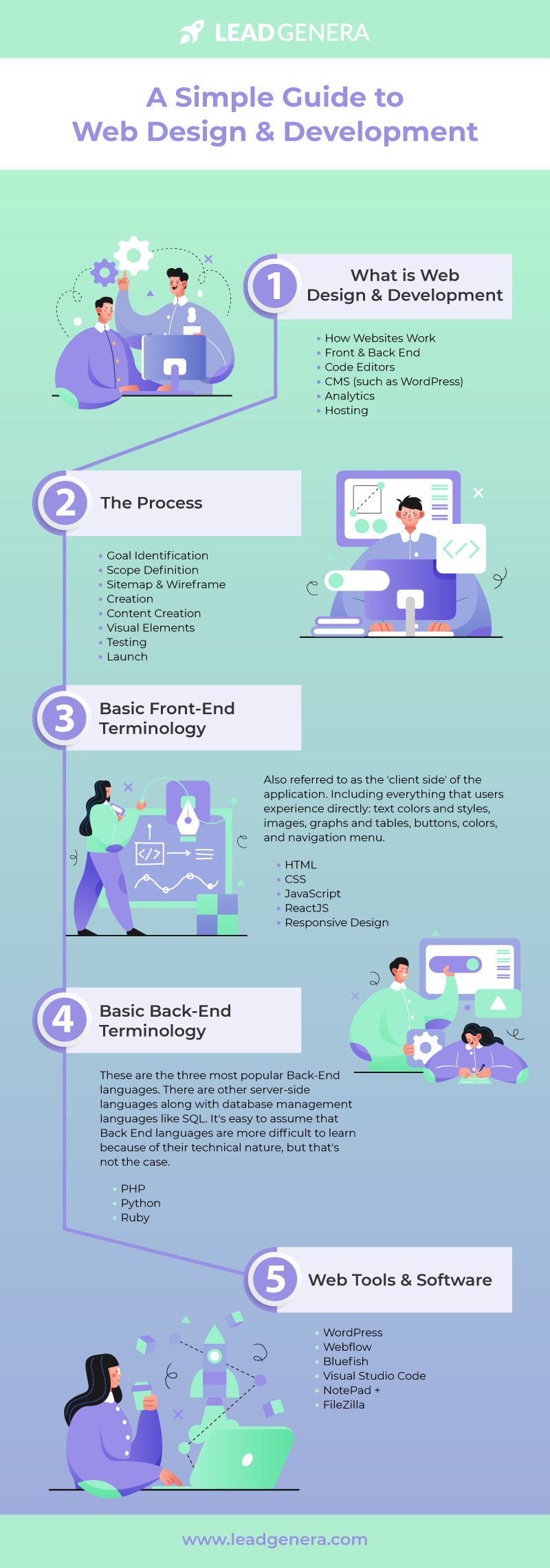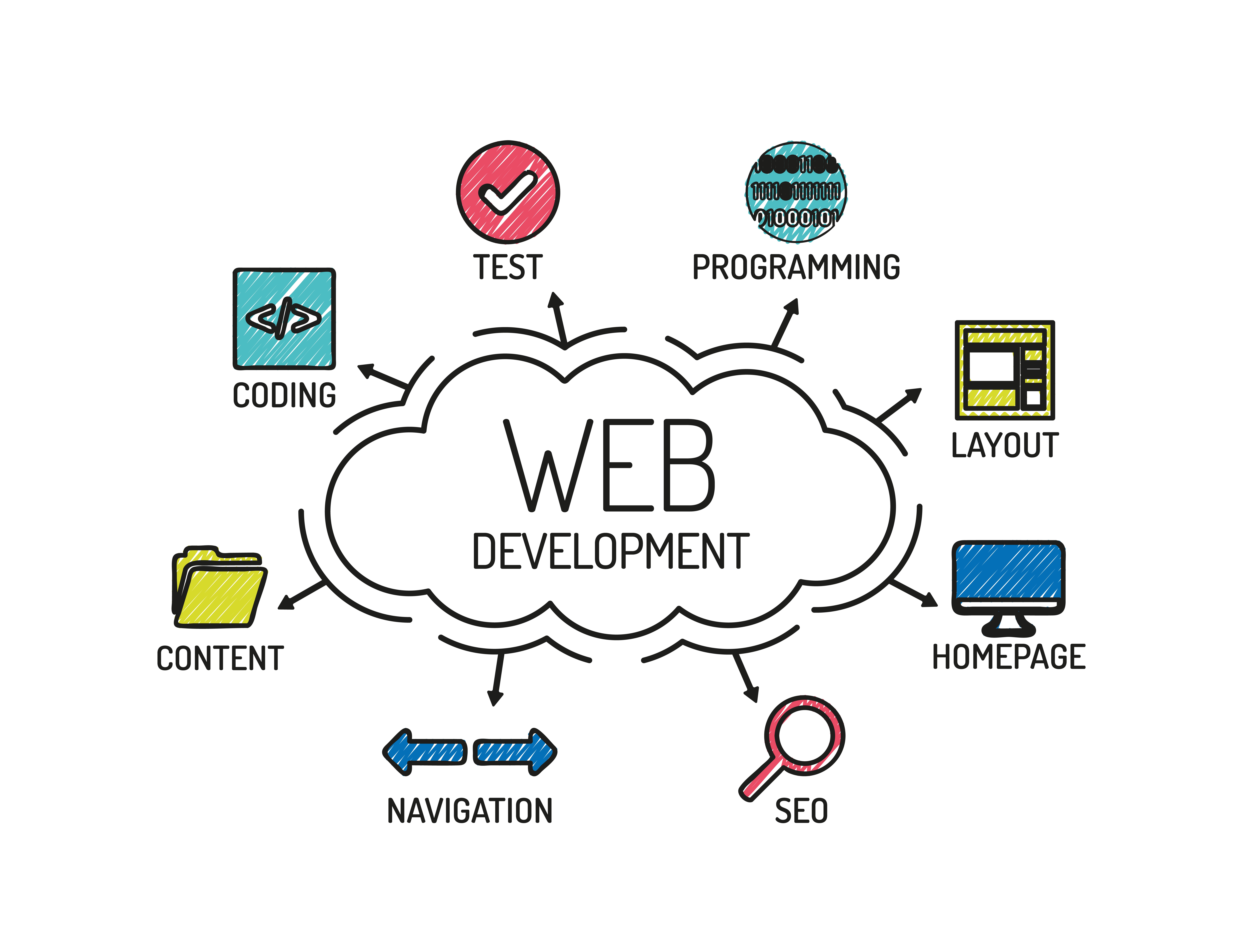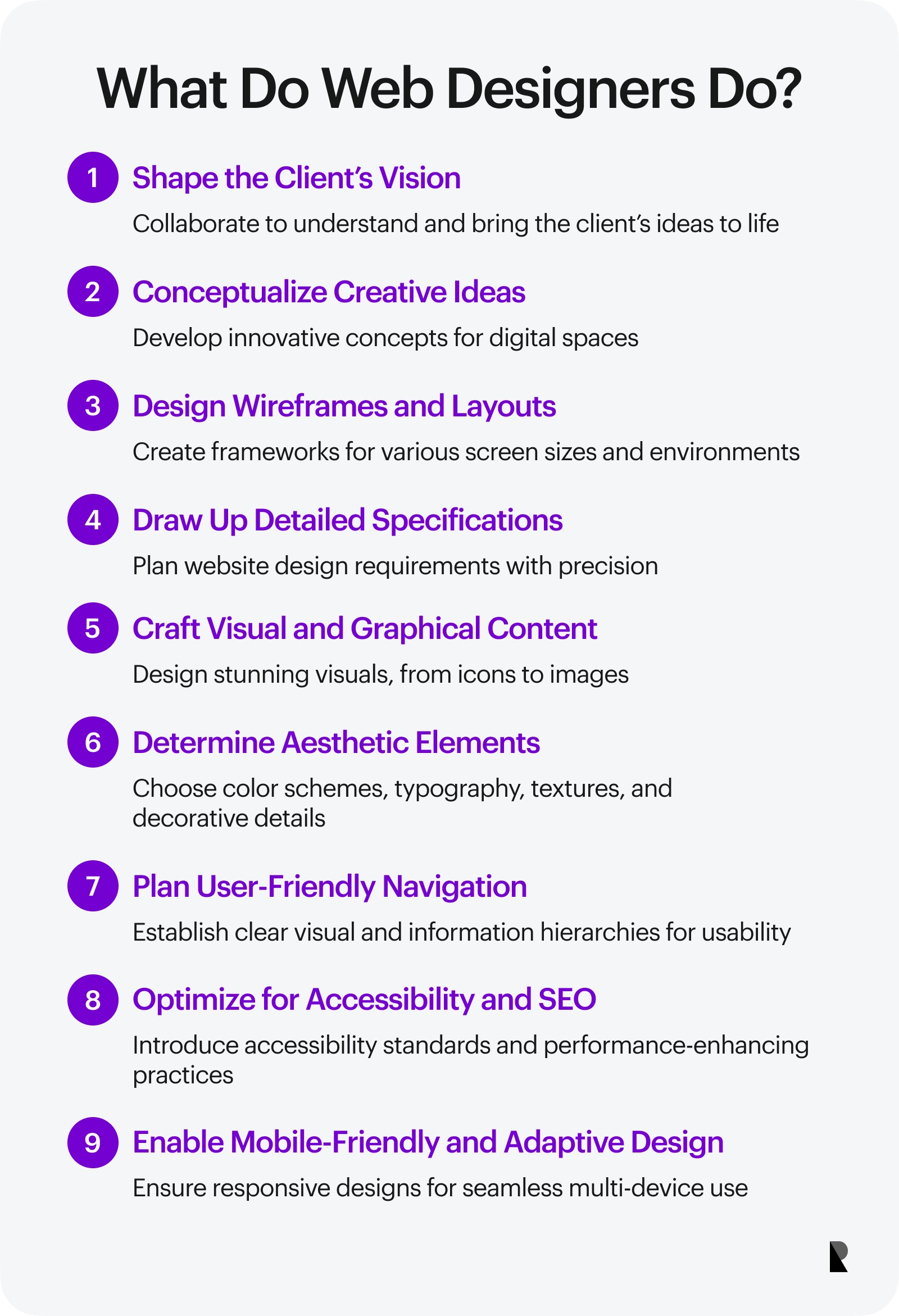Website design guidelines for simple navigation
Everything About Web Style: Understanding Its Value for Your Online Visibility
Web layout works as a fundamental facet of establishing an online presence. It affects individual experiences and forms understandings of brand names. Efficient web design includes different components that enhance functionality and involvement. As the digital landscape progresses, comprehending the value of these design principles becomes crucial (web design). What are the key parts that make a site not just useful, yet engaging? Discovering this might expose important understandings for anyone intending to succeed online
The Duty of Website Design in Customer Experience
Web layout profoundly affects individual experience by forming just how site visitors communicate with a web site. Aspects such as format, color pattern, and typography create the first impact, leading customers via the material. Effective website design prioritizes instinctive navigating, guaranteeing that visitors can easily locate info without disappointment. Additionally, responsive layout boosts availability across various tools, providing to a wider target market. The speed of a site also plays a crucial role; slower-loading web pages can cause higher bounce rates and decreased customer satisfaction. Aesthetic hierarchy, attained through spacing and dimension modifications, directs users' attention to vital attributes or phones call to action. Uniformity in style aspects cultivates experience and depend on, motivating customers to involve even more deeply. Eventually, a well-designed internet site not just attracts site visitors however likewise keeps them, influencing their overall assumption of the brand or service it stands for. This way, web style is a basic part of an effective online visibility.
Crucial Element of Efficient Website Design
Effective internet layout depends upon a number of crucial elements that boost customer involvement and contentment. Aesthetic hierarchy principles direct individuals with material, making sure that important info attracts attention - website development. Mobile responsiveness is vital in an electronic landscape where individuals access websites throughout various devices.
Visual Hierarchy Principles
Lots of aspects contribute to an effective internet site, the principles of visual hierarchy stand out as fundamental to assisting user experience. Aesthetic pecking order refers to the arrangement of layout elements to connect significance and straight users' focus efficiently. Key variables consist of size, spacing, comparison, and color, which help prioritize info and develop a flow that is intuitive for users. Bigger components generally attract the eye first, while contrasting shades can highlight telephone calls to action. Thoughtful spacing can also enhance readability and comprehension. By using these principles, designers can craft a seamless experience that not only involves customers but additionally assists in navigating and improves overall functionality. Inevitably, a well-executed aesthetic hierarchy enhances the site's efficiency in sharing its message.
Mobile Responsiveness Essentials
Mobile responsiveness is an essential part of modern website design, guaranteeing that web sites work seamlessly across different devices and display dimensions. This flexibility enhances user experience, as site visitors can access material easily whether they use a mobile phone, tablet, or desktop computer . Secret elements of mobile responsiveness consist of fluid grids, versatile images, and media queries, which permit formats to readjust dynamically. Prioritizing touch-friendly navigation and clear typography even more improves usability on smaller sized displays. In addition, maximizing loading speeds is vital, as mobile users often anticipate fast access to information. By applying these basics, internet designers produce sites that engage users, lower bounce rates, and inevitably contribute to raised conversions and consumer complete satisfaction. Mobile responsiveness is thus essential for keeping a competitive on-line existence.
The Impact of Internet Design on Brand Name Understanding
Web style substantially influences brand name understanding, beginning with the necessary impression a site makes on site visitors. Consistent aesthetic components improve trust fund and acknowledgment, reinforcing the brand's identification. Additionally, a positive customer experience can form just how consumers involve and view with the brand name in general.
Initial Impacts Issue
Their initial response can substantially influence their assumption of the brand when site visitors come across a site. A well-designed site can stimulate sensations of dependability, trust fund, and professionalism and reliability, while an inadequately created one may set off skepticism and uncertainty. Users often form judgments within secs, making the first perception crucial. Components such as format, shade plans, and typography play significant roles in forming these first ideas. A tidy and contemporary design can convey innovation, whereas obsolete visuals may suggest forget. In addition, an instinctive navigating system enhances user experience, reinforcing favorable understandings. Efficient internet style not only records focus yet also develops a strong foundation for brand name identification, influencing continuous relationships with site visitors and potential consumers.
Visual Uniformity Develops Count On

Individual Experience Influences Understanding
A natural aesthetic identity prepares for a favorable customer experience, which greatly affects brand assumption. Efficient website design warranties that users can browse a web site intuitively, bring about greater complete satisfaction and involvement. When individuals run into an aesthetically pleasing and practical website, they are more probable to connect the brand name with expertise and reliability. On the other hand, bad style can lead to aggravation, causing users to create unfavorable impressions. Aspects such as color design, typography, and format play a vital duty fit emotional actions. Ultimately, a properly designed site not only boosts use but additionally reinforces the brand's worths and message, developing an enduring impact on customer perception and loyalty. Consistency in style further strengthens this link, fostering depend on and knowledge.
Look Engine Optimization and Website Design
Efficient web design is necessary for boosting seo (SEO), as it directly influences how online search engine creep and index a website. A well-structured site, featuring instinctive navigating and clear power structures, enables online search engine to quickly understand the web content and its importance. Furthermore, the usage of enhanced meta tags, headings, and alt message for pictures additionally aids in improving visibility in search engine results.
Additionally, web page lots rate, a critical aspect of web style, considerably influences search engine optimization positions. Websites that load gradually might irritate users, leading to higher bounce prices, which internet search engine take an adverse signal.
Incorporating search engine optimization ideal practices right into website design not only boosts online search engine rankings but additionally guarantees that visitors have a favorable experience. Ultimately, an alternative method to website design and SEO can lead to increased website traffic, much better individual engagement, and improved conversion rates, making it vital for online success.
Responsive Layout: Fulfilling User Demands Throughout Gadgets
As individuals progressively gain access to sites from a variety of devices, receptive style has become an important remedy for satisfying their needs. This technique assures that website adapt seamlessly to different screen resolutions, orientations, and dimensions, giving an optimal viewing experience. By utilizing fluid grids, adaptable pictures, and media queries, receptive design allows web content to range and reposition, enhancing functionality throughout smartphones, desktop computers, and tablets.
Responsive design improves website performance, as it frequently lowers loading times via enhanced photos and streamlined code. This performance not only improves individual satisfaction yet also adds to much better search engine rankings, as search engines favor mobile-friendly sites. As the digital landscape continues to advance, services that focus on receptive layout are much better furnished to involve their target markets successfully, assuring that users can communicate and browse with material despite the tool they make use of. Subsequently, responsive design is vital for preserving a solid on the internet existence.
The Relevance of Ease Of Access in Website Design
Internet style not only requires responsiveness to numerous tools yet additionally requires a commitment to ease of access for all individuals. Ease of access in website design assurances that individuals with disabilities can navigate, comprehend, and connect with online content successfully. This incorporates numerous components, consisting of message readability, alternate text for photos, and keyboard navigation choices. By focusing on ease of access, internet designers develop inclusive experiences that cater to a varied target market, consequently widening their reach and improving pop over to this site user complete satisfaction.
Available internet sites can improve search engine optimization and minimize possible legal dangers linked with non-compliance to ease of access criteria. Businesses that accept comprehensive layout not only satisfy honest obligations however additionally show social responsibility, promoting a favorable brand name image. Eventually, the relevance of availability in web layout hinges on its ability to produce equitable online atmospheres, encouraging all customers, no matter their abilities, to involve totally with electronic content and services.
Fads in Web Layout: Remaining Present in a Digital World
Staying abreast of trends in web design is crucial for creators intending to supply modern-day and interesting user experiences. As technology progresses, so do individual assumptions, making it crucial for designers to integrate contemporary elements right into their job. Present trends consist of minimalism, which focuses on clean lines and sufficient white space, enhancing usability and visual appeal. Furthermore, the rise of dark setting options deals with customer comfort while browsing.
Receptive style remains important, making sure sites function flawlessly throughout various tools. The integration of micro-interactions adds a layer of interaction, allowing users to really feel a link with the website. Making use of vibrant click to read typography and vivid color schemes can also aid capture attention in a crowded digital landscape. By welcoming these fads, internet designers can develop aesthetically enticing, practical, and straightforward web sites, eventually enhancing their clients' on the internet visibility and promoting favorable individual interactions.
Often Asked Questions
Just How Much Does Specialist Web Style Usually Expense?
Specialist website design commonly costs between $2,500 and $10,000, relying on intricacy and features. Customized styles might boost prices further, while easier layouts can lower expenses, making pricing extremely variable based upon customer needs.

Can I Layout My Website Without Coding Expertise?
Yes, an individual can make a site without coding understanding. Various easy to use site contractors and content management systems provide layouts and drag-and-drop attributes, making it possible for individuals to produce visually appealing websites quickly and effectively.
What Are Typical Errors to Prevent in Internet Style?
Typical errors in internet layout include chaotic designs, bad navigating, absence of mobile optimization, overlooking customer experience, slow-moving filling times, making use of also several typefaces or shades, and disregarding ease of access. These errors can reduce and hinder visitors engagement.

Exactly how Usually Should I Update My Internet site's Layout?
A website's design must be upgraded every 2 to 3 years, or earlier if considerable fads emerge. Routine updates assure relevance, improve customer experience, and maintain compatibility with new technologies and tools, promoting continuous interaction.
What Devices Can Help Me Produce My Own Web site?
Countless tools exist for producing web sites, consisting of WordPress, Wix, and Squarespace (web design). These platforms provide user-friendly interfaces, adjustable themes, and numerous functions that empower people to make websites tailored to their particular requirements and preferences
Web my review here style greatly influences user experience by shaping exactly how visitors interact with an internet site. Efficient internet style hinges on several key aspects that improve user involvement and satisfaction. Reliable web style assurances that customers can navigate a site intuitively, leading to greater satisfaction and interaction. Staying abreast of trends in web style is vital for creators aiming to deliver contemporary and appealing customer experiences. Usual blunders in web design include cluttered formats, inadequate navigating, lack of mobile optimization, disregarding individual experience, sluggish packing times, making use of too several typefaces or colors, and neglecting accessibility.